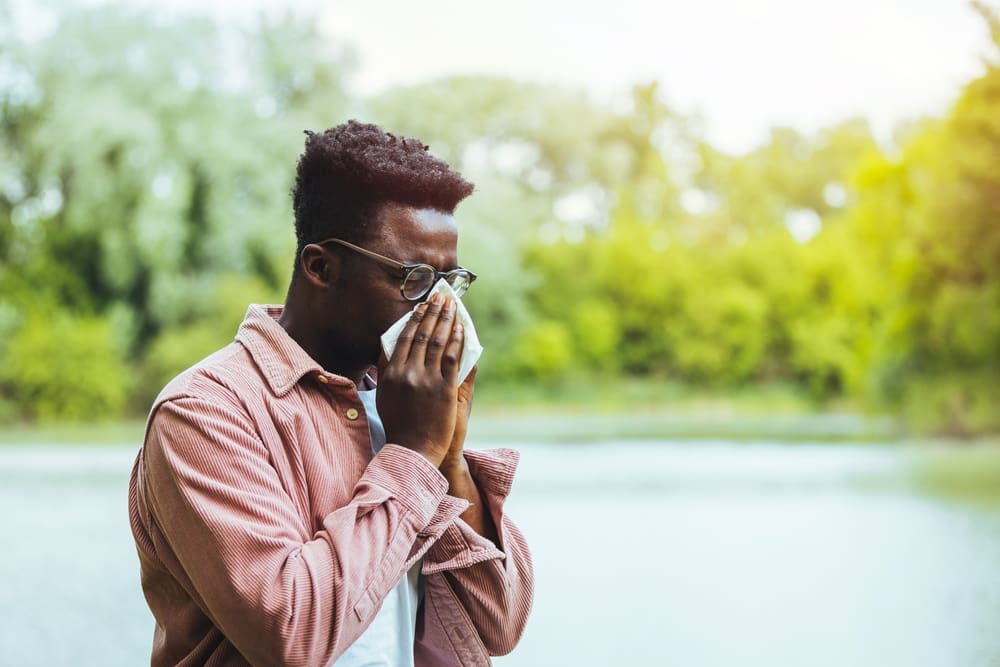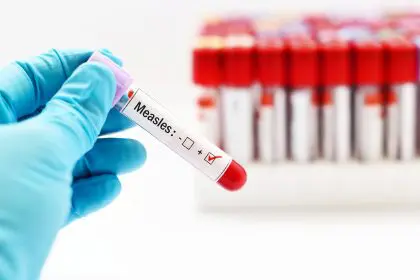The internet has crowned sneezing as the body’s secret detox method—claiming everything from “sneezing expels toxins from your brain” to “seven sneezes equals one orgasm.” But before you start pepper-sniffing your way to a cleaner system, let’s separate the genuine nasal facts from the viral fiction. That powerful achoo might feel like it’s blasting out all your problems, but what’s really happening inside your head during that explosive moment?
The sneeze basics
That seemingly simple sneeze is actually an impressively complex reflex orchestrated by multiple parts of your brain working in perfect coordination. When something irritates the delicate lining of your nasal passages—whether it’s dust, pepper, a virus, or even bright light for some people—specialized nerve endings send an SOS to your brain.
Your brain responds by launching a precisely choreographed sequence: you take a deep breath, your throat closes briefly, pressure builds in your chest, and then—achoo!—muscles contract explosively to force air out through your nose and mouth at speeds reaching 100 miles per hour.
This sneeze serves a critical protective function, forcibly expelling irritants from your nasal passages before they can travel deeper into your respiratory system. It’s essentially your body’s built-in bouncer, kicking out unwelcome particles before they can cause more trouble inside.
The toxin tale
The idea that sneezing eliminates toxins from your brain has spread across social media with the persistence of a cold virus in a kindergarten classroom. These claims typically suggest that sneezing purges harmful substances that accumulate in your brain, with some versions adding that suppressing sneezes keeps these alleged toxins trapped inside your head.
This compelling narrative taps into our desire for simple, physical solutions to complex health concerns. The satisfying release of a good sneeze certainly feels cleansing, which makes the detox story intuitively appealing. After all, if your body can expel unwanted substances through other means, why not through a powerful sneeze?
The problem is that this appealing story fundamentally misunderstands both how sneezing works and how your brain handles waste removal. To understand why, we need to look at what actually happens during a sneeze—and how your brain really cleans itself.
The brain barrier reality
Your brain is arguably your body’s most protected organ, separated from your bloodstream by the selective blood-brain barrier and physically shielded by layers of membrane called meninges. It doesn’t have any direct connection to your nasal passages that would allow toxins to be sneezed out.
The brain does indeed produce waste products during its constant activity, but it has its own sophisticated cleanup system. While we sleep, the recently discovered glymphatic system activates, washing away cellular waste through a network entirely separate from your respiratory tract.
In other words, there’s simply no pathway for toxins to travel from your brain to your nose for expulsion through a sneeze. The two systems—your brain’s waste removal and your respiratory tract’s protective sneezing—operate independently, serving different purposes through different mechanisms.
The actual sneeze contents
So if not brain toxins, what exactly are you expelling when you sneeze? Each achoo launches a complex mixture of air, mucus, saliva, and whatever irritants triggered the sneeze in the first place. This moist microdroplet cloud can contain:
Mucus and associated proteins produced by your nasal passages Saliva from your mouth, mixed in during the explosive expulsion Environmental particles that irritated your nose initially Potentially bacteria and viruses, if you’re ill
What’s notably absent from this list? Brain toxins. There’s simply no mechanism for cerebral waste products to make their way into your nasal passages or throat for expulsion through a sneeze.
The danger of suppression
While sneezing doesn’t detoxify your brain, the warnings against suppressing sneezes actually do contain a kernel of truth. Holding in a sneeze by pinching your nose and closing your mouth can potentially cause problems—just not the toxin buildup that viral posts suggest.
When you stifle a sneeze, the pressure that would have been released outward gets redirected elsewhere. In rare cases, this pressure has caused injuries ranging from ruptured eardrums and damaged blood vessels to air trapped in the chest cavity or throat. There are even documented cases of people rupturing the backs of their throats by suppressing particularly powerful sneezes.
The legitimate concern isn’t trapped toxins but redirected pressure. When that powerful expulsion can’t exit normally, the force has to go somewhere, occasionally with painful or even dangerous consequences.
The detox disconnect
Our fascination with “detoxifying” practices often exceeds our understanding of how the body actually handles waste removal. The term “toxins” gets applied broadly to everything from environmental pollutants to normal metabolic waste products, with little specificity about which substances are allegedly being eliminated.
Your body has multiple sophisticated systems for removing various types of waste: your liver and kidneys filter blood, your digestive system eliminates food waste, your lungs exhale carbon dioxide, and your skin excretes some substances through sweat. Each system handles specific types of waste through specialized processes.
Sneezing belongs to none of these waste removal systems. It’s a protective reflex designed to keep additional irritants from entering your respiratory system, not a mechanism for expelling internally generated waste products.
The orgasm myth
While we’re myth-busting, let’s address another popular sneeze claim: that seven sneezes equal the pleasure of one orgasm. This comparison appears to have no physiological basis whatsoever. While both sneezing and orgasm involve involuntary muscle contractions and a buildup followed by release, the neurological pathways and brain regions involved differ significantly.
The sneeze reflex primarily involves your brainstem and respiratory centers, while orgasm engages a complex network including your limbic system and pleasure pathways. The neurotransmitters and hormones released during each experience are entirely different in both type and quantity.
This persistent myth likely stems from the surface-level similarity of “tension and release” that both experiences provide, combined with the human tendency to compare unfamiliar sensations to more familiar ones. In reality, they’re entirely different physiological events serving completely different biological purposes.
The bright light trigger
While sneezing doesn’t detox your brain, the relationship between your brain and sneezing does include some legitimately fascinating aspects. One of the most interesting is the photic sneeze reflex—the tendency for about 18-35% of people to sneeze when exposed to bright light, particularly sunlight.
This genetic trait, sometimes called ACHOO Syndrome (Autosomal Dominant Compelling Helio-Ophthalmic Outburst—yes, scientists have a sense of humor), demonstrates how closely your nervous system intertwines various sensory inputs. The current theory suggests some cross-wiring between the optic nerve and the trigeminal nerve that controls sneezing.
This peculiar connection between visual stimulation and sneezing showcases how complexly interconnected your nervous system truly is, even while maintaining separate functional pathways for different physiological processes.
The sneeze uniqueness
Another interesting aspect of sneezing is how individual your sneeze “signature” tends to be. The sound, force, and pattern of your sneezes is partly determined by your unique anatomy and partly influenced by social learning and habit.
Some people are loud multisneezers, while others have barely audible single sneezes. These patterns tend to remain consistent throughout life, becoming part of your physical identity. You can modify certain aspects of your sneeze through conscious effort, but the underlying reflex follows pathways shaped by your genetic makeup.
This individuality makes sneezing one of your most distinctive involuntary actions—a physiological fingerprint that combines your innate reflexes with learned behavior in a way that’s uniquely yours.
The real health connections
While sneezing doesn’t detoxify your brain, changes in your sneezing patterns can provide legitimate health insights. Sudden increases in sneezing might indicate allergies, infections, or environmental irritants. Unusual triggers like eating (gustatory rhinitis) or plucking eyebrows (trigeminal stimulation) can point to specific sensitivity patterns in your nervous system.
Complete absence of sneezing despite irritation could indicate neurological issues affecting your brainstem, where the sneeze reflex originates. And certain medications, particularly those affecting your immune response or nervous system, can alter your normal sneezing patterns.
In these ways, paying attention to your sneezing can provide genuine health information—not because sneezes expel toxins, but because they reflect how your protective reflexes are functioning.
The true purpose appreciation
Appreciating the actual purpose of sneezing—protecting your respiratory system from irritants—helps clarify why certain folk practices around sneezing developed cross-culturally. The tradition of saying “bless you” after someone sneezes likely originated from the association between sneezing and illness, not from any notion of toxin expulsion.
Your sneeze reflex represents an elegant protective mechanism that has helped humans survive by preventing harmful particles from reaching deeper into our respiratory systems. This genuine biological value deserves appreciation without the embellishment of unfounded detoxification claims.
In many ways, the true purpose of sneezing—immediate, reflexive protection against potential threats—is more impressive than the mythical cleansing properties attributed to it. Your body’s ability to detect and forcefully expel irritants within milliseconds demonstrates remarkable defensive sophistication.
The accurate understanding
Letting go of the “sneezing expels brain toxins” myth doesn’t make sneezing any less interesting or important. Understanding the actual function of this powerful reflex gives you more accurate insight into how your body protects itself and how your various systems work together to maintain health.
The next time you feel a sneeze building, appreciate it for what it truly is: your body’s impressively engineered defense system keeping unwanted particles from entering your respiratory tract—not a detoxification method for your brain. The real story of how your body protects and cleans itself is far more fascinating than viral oversimplifications suggest.


















